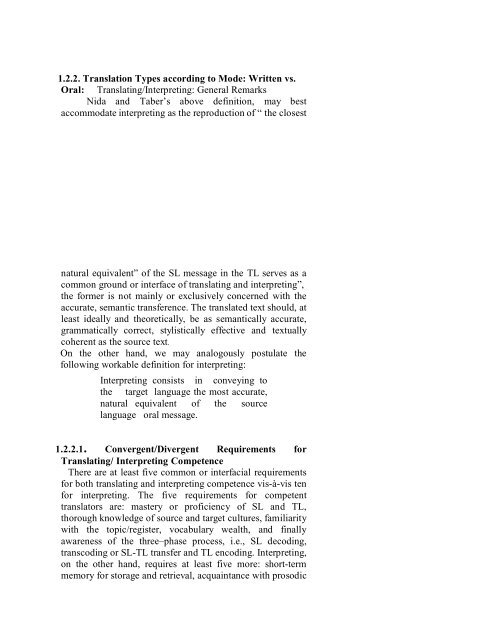424_2061_A.B.
424_2061_A.B.
424_2061_A.B.
- No tags were found...
You also want an ePaper? Increase the reach of your titles
YUMPU automatically turns print PDFs into web optimized ePapers that Google loves.
1.2.2. Translation Types according to Mode: Written vs.Oral: Translating/Interpreting: General RemarksNida and Taber’s above definition, may bestaccommodate interpreting as the reproduction of “ the closestnatural equivalent” of the SL message in the TL serves as acommon ground or interface of translating and interpreting”,the former is not mainly or exclusively concerned with theaccurate, semantic transference. The translated text should, atleast ideally and theoretically, be as semantically accurate,grammatically correct, stylistically effective and textuallycoherent as the source text.On the other hand, we may analogously postulate thefollowing workable definition for interpreting:Interpreting consists in conveying tothe target language the most accurate,natural equivalent of the sourcelanguage oral message.1.2.2.1. Convergent/Divergent Requirements forTranslating/ Interpreting CompetenceThere are at least five common or interfacial requirementsfor both translating and interpreting competence vis-à-vis tenfor interpreting. The five requirements for competenttranslators are: mastery or proficiency of SL and TL,thorough knowledge of source and target cultures, familiaritywith the topic/register, vocabulary wealth, and finallyawareness of the three–phase process, i.e., SL decoding,transcoding or SL-TL transfer and TL encoding. Interpreting,on the other hand, requires at least five more: short-termmemory for storage and retrieval, acquaintance with prosodic14
















